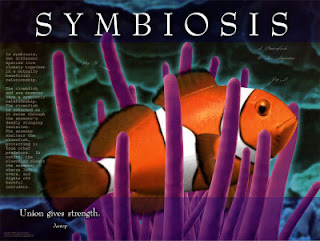There are many types of cycles like: the water cycle, the carbon dioxide cycle and nitrogen cycle. This will be the cycles we will see today. The water cycle is the continious movement of water on Earth´s surface and the air, changing from liquid to gas to liquid. The carbon dioxide cycle is the continuos movement of carbon between the atmosphere and living things. The nitrogen cycle is the transfer of nitrogen from the atmosphere to plants and back to the atmosphere and directly to plants again. If you don´t know you are part of many cycles like I named in the first part of this paragraph, I would explain to you this cycles.
- The Water Cycle: I will start to explain in the recoletion because the water cycle dose not have an end or start.
1.
Recollection: Water flows into rivers, lakes, streams , etc. Most of the water is absorb by the soil and use to help plants made the process of photosynthesis.
2. Evaporation: When the sunlight is hot enought, from water would born gases this is evaporation the evaporation rises up like gas thats why in the meaning of water cycle said the water travels on Earth from
liquid to gas to liquid.
3.Condensation: Condensation is one of the part of the process of the water cycle before the transform of liquid to gas.
4.Transpiration: It can be of human or plants because when we run we sweet and the is evaporated and is the same with the plants.
5.Precipitation: Is the time when the
liquid to gas to liquid starts, It will rain !!!
6. Runoff: The water goes on the streets or mountains or wherever place you can find an altitude and rains.
7. Groundwater: The soil absorbs the water and the process will continue.
The Carbon Dioxide Cycle: The carbon cycle is the biogeochemical cycle by which carbon is exchanged among the biosphere, pedosphere, geosphere, hydrosphere, and atmosphere of the Earth.
Nitrogen Cycle: The nitrogen cycle is the process by which nitrogen is converted between its various chemical forms. This transformation can be carried out via both biological and non-biological processes.
Thanks for your attention
If you don´t understand post your question where you see the coments.

























